Michael Dean at Fondazione Converso (with Campi bros)
Fondazione Converso brings Michael Dean inside San Paolo Converso, the Campi brothers’ milanese masterpiece. The End is actually a new chapter.
Even the two majestic rooms of the de-consecrated Church of San Paolo Converso, currently run by milanese Fondazione Converso, attest that the beauty of Michael Dean’s artworks doesn’t actually lie in the realm of beauty. Rather, it belongs to their being brutal, broken, volatile like the nature of the feelings they tell about. In this instance Apollo is disguised as a beggar, with worn-out cloths and a weathered face. So Apollo becomes invisible to mortal eyes, and can help our pagan hero.
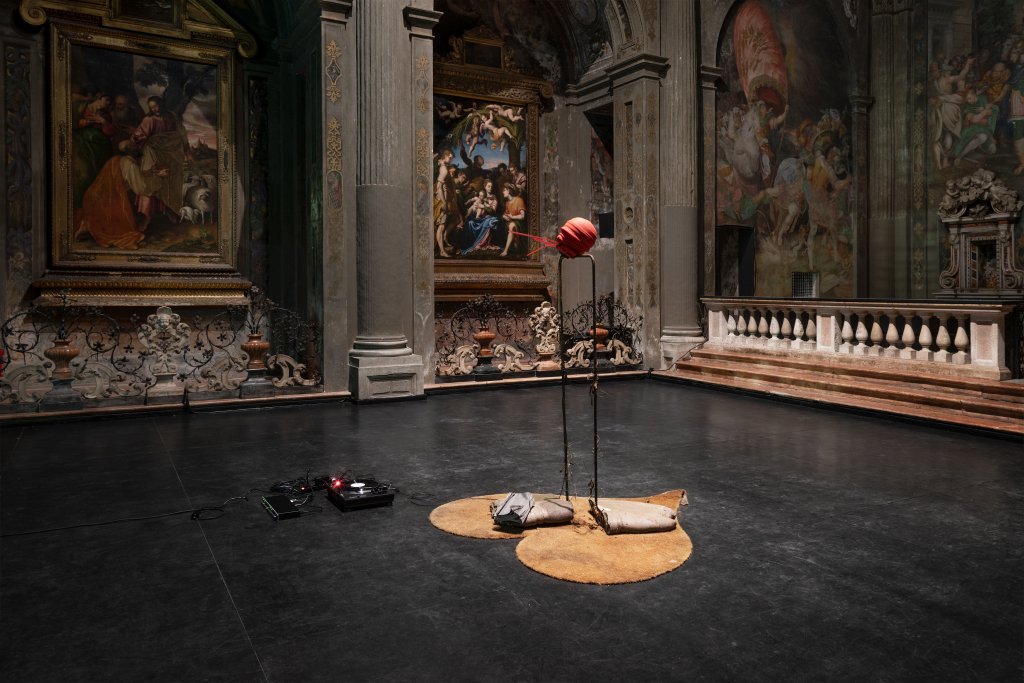
The former 16th century church was taken away from the Roman Catholic Church by Napoleon, who turned it into a warehouse for his troops, as it often happened in those cases. In the 20th century the church was given back its original features. First it was renovated into a concert hall, then it became the recording studio of PDU, that is the record label founded in 1967 by Mina and his farseeing father, Giacomo Mazzini, who was trying to protect his daughter’s artistic freedom – the recording studio was called ‘La Basilica’.

The last chapter begins in 2014, when San Paolo Converso becomes the office of Locatelli Partners architecture studio; three years later the CONVERSO project was born. Since then the space has been hosting various ‘site specific’ exhibitions by artists such as Yngve Holen, Alan Kaprow, or Franco Mazzuchelli (this latter deeply contributed in the 1970s to the re-appropriation of another fundamental de-consecrated milanese church, that of San Carpoforo). Clearly the topic of the relationship between present and ‘existing’ past is not new here. Yet, Michael Dean’s case is rather different from those that have taken place so far, and somehow it’s more radical (here is a link to the essay we wrote in occasion of his exhibition at South London Gallery, the same year he was shortlisted for the Turner Prize).

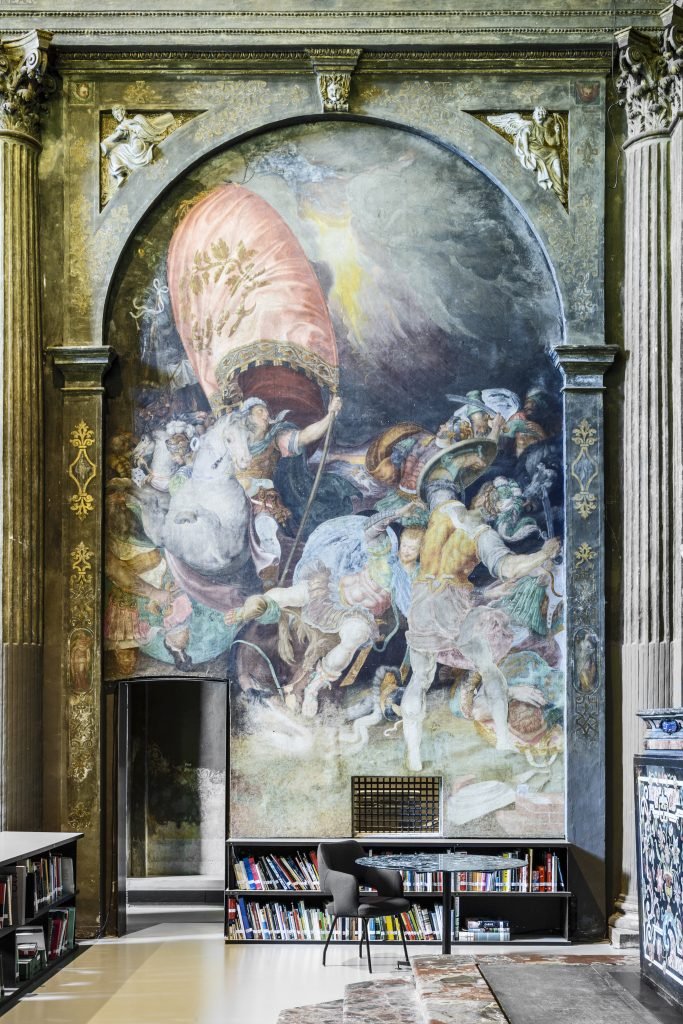
Antonio Campi, The conversion of Saint Paul, 1564-1588, presbiterio, San Paolo Converso, Milano. Ph. Luca Rotondo, courtesy of Fondazione Converso. 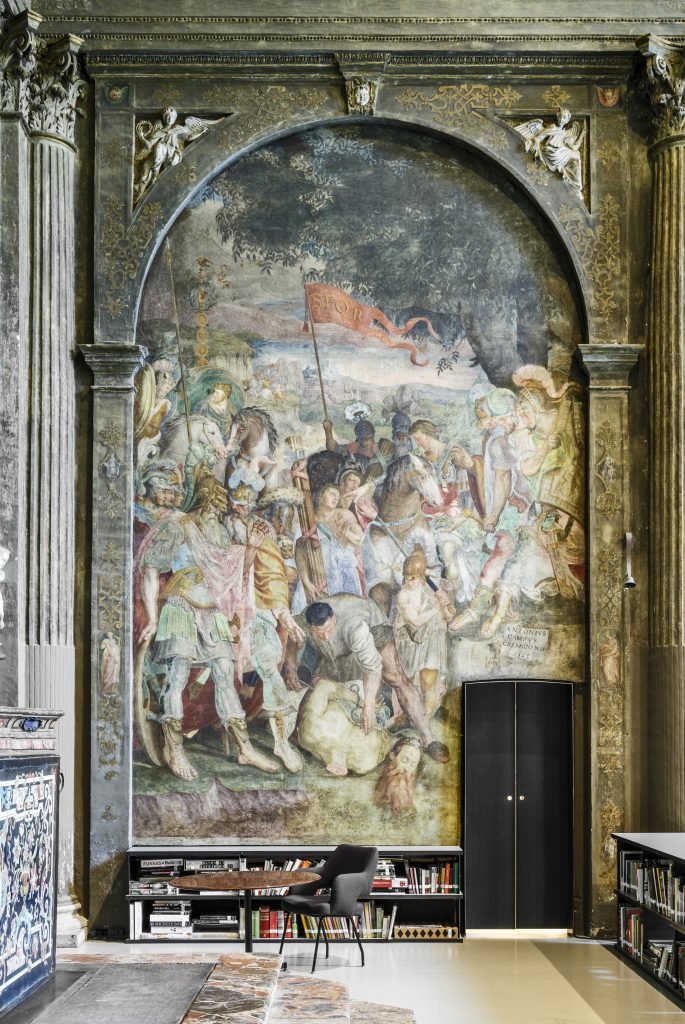
Antonio Campi, The martyrdom of Saint Paul, 1564-1588, presbiterio, San Paolo Converso, Milano. Ph. Luca Rotondo, courtesy of Fondazione Converso.
San Paolo Converso is divided into two ample rooms by a wall that splits the central nave into two parts. Originally the one towards the facade was for the public, while the other was reserved to the Angelic Sisters of Saint Paul who used to live in the adjoining convent and were specialised in educating young girls. The religious community was established in 1530 by the noblewoman Ludovica Torelli, Countess of Guastalla.
San Paolo Converso is decorated by an ample and homogeneous cycle of frescoes, which harmoniously fits with the sculptural and architectural parts. It is a work by Giulio, Antonio and Vincenzo Campi, that is the most important and active artists in Lombardy at that time. In San Paolo Converso the Campi brothers work side by side, thus producing their most significant work. The drawing on the church facade belongs to Cerano, another extraordinary artist. Like the artists Fondazione Converso invited in the past, also Micheal Dean found himself working within a treasure chest, before important artworks by the best artists who lived and worked in Milan during a period of extraordinary cultural growth for the city.
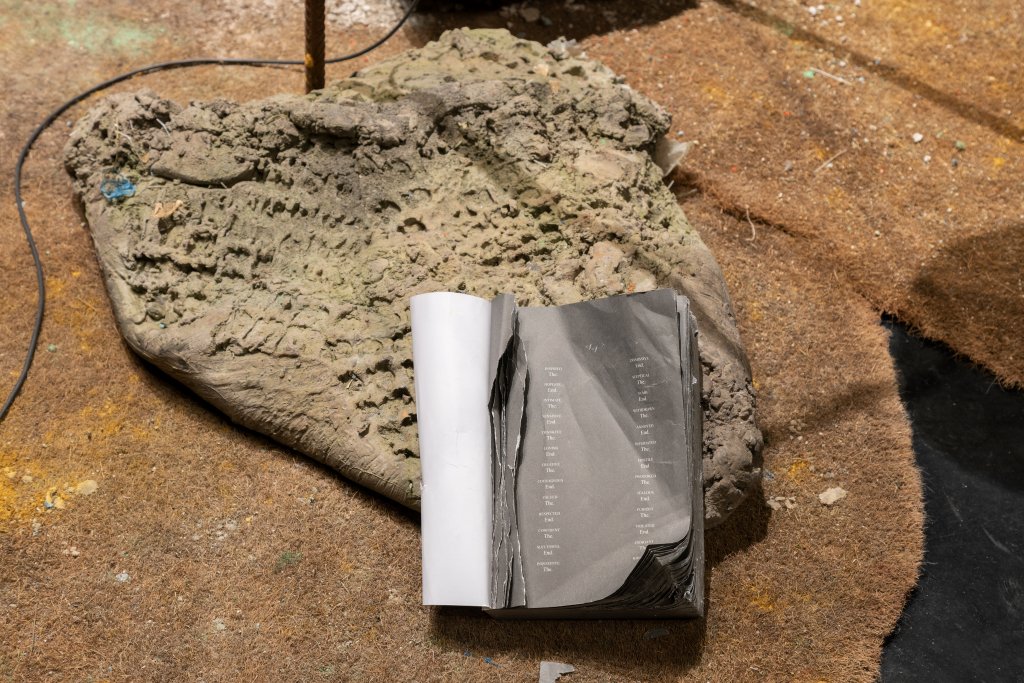
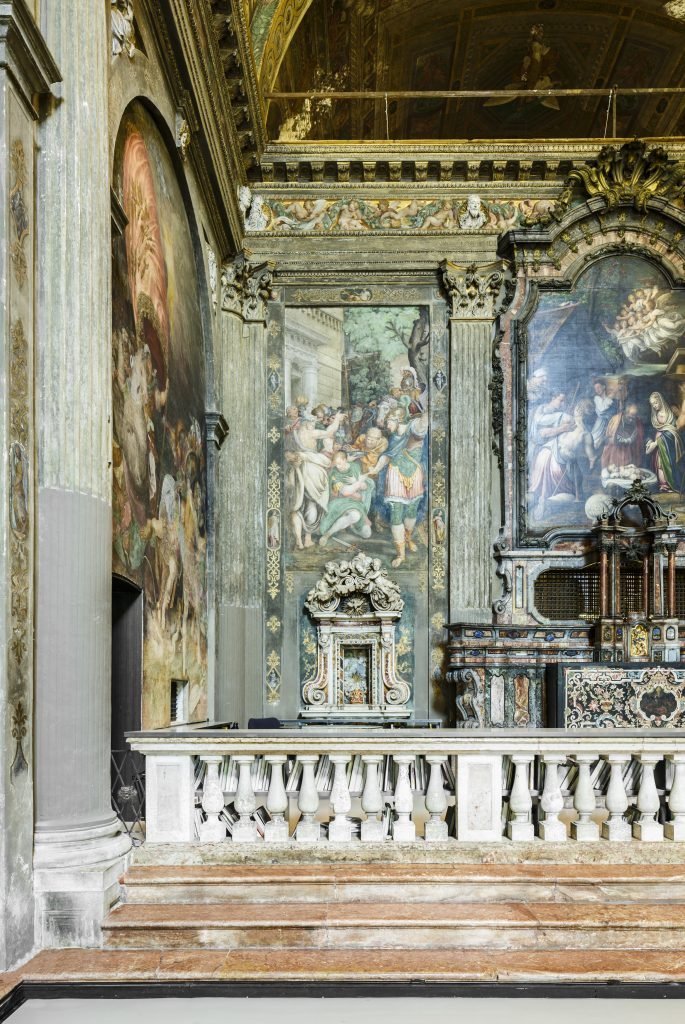
Giulio Campi, The baptism of Saint Paul, 1564-1588, presbiterio, San Paolo Converso, Milano. Ph. Luca Rotondo, courtesy of Fondazione Converso. 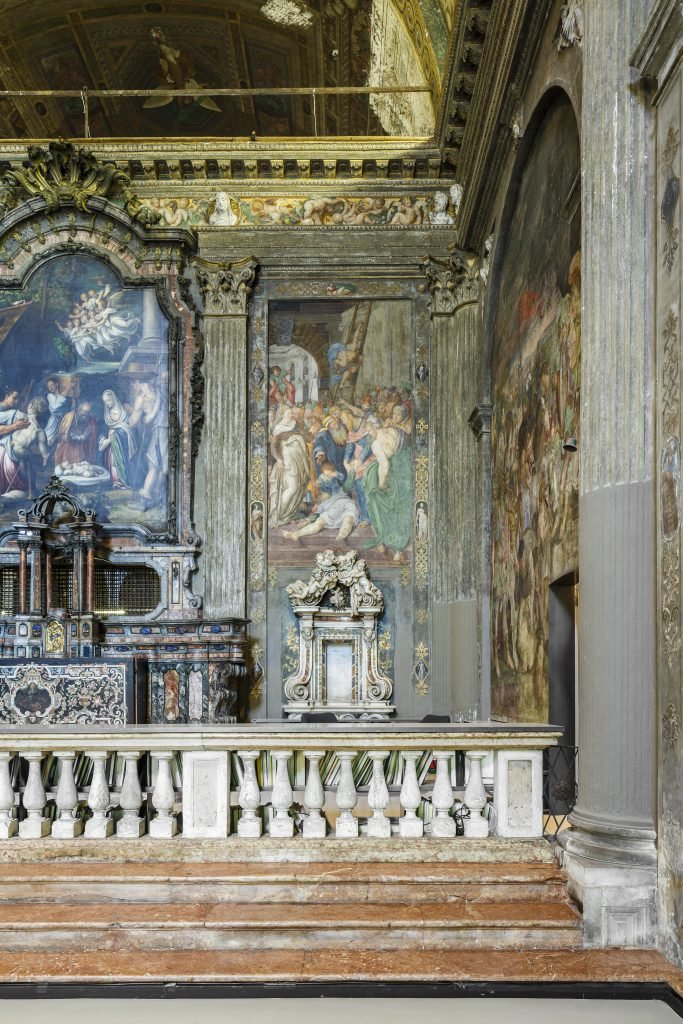
Antonio Campi, The miracle of Saint Paul, 1564-1588, presbiterio, San Paolo Converso, Milano. Ph. Luca Rotondo, courtesy of Fondazione Converso.
Let’s now get to the beauty that is revealed through the ugly. At the centre of the room there are two concrete tongues laying on a worn-out heart-shaped doormat – tongues and concrete are indeed elements that have been coming back in Micheal Dean’s practice since his debut (which took place back in 2008, in Milan, thanks to the gallerist Alessandro De March who dedicated to the artist an early solo show whose memories can still be found online, despite the gallery closed down two years later). The crossing between written or spoken words and sculpture identify Michael Dean’s practice. In this case, the tongues support two metal bars which would have otherwise ended up in a construction site. The bars, in turn, bear a vase, roughly wrapped in a red cloth. Feet, body and head. There is a black book that the viewers could tear pages out of, which bear the word ‘End’ with a number of adjectives. Like many of Micheal Dean’s vertical works, also this one could remind of the wrinkled and tapered figures by Alberto Giacometti. However, in this instance, since we are inside a big sound box, the thin figure is given voice by an old (yet new) vinyl record player connected to a socket by a wire to which plastic tapes bearing the words “fucksake” and “lol” (title of the exhibition) are roughly tied.

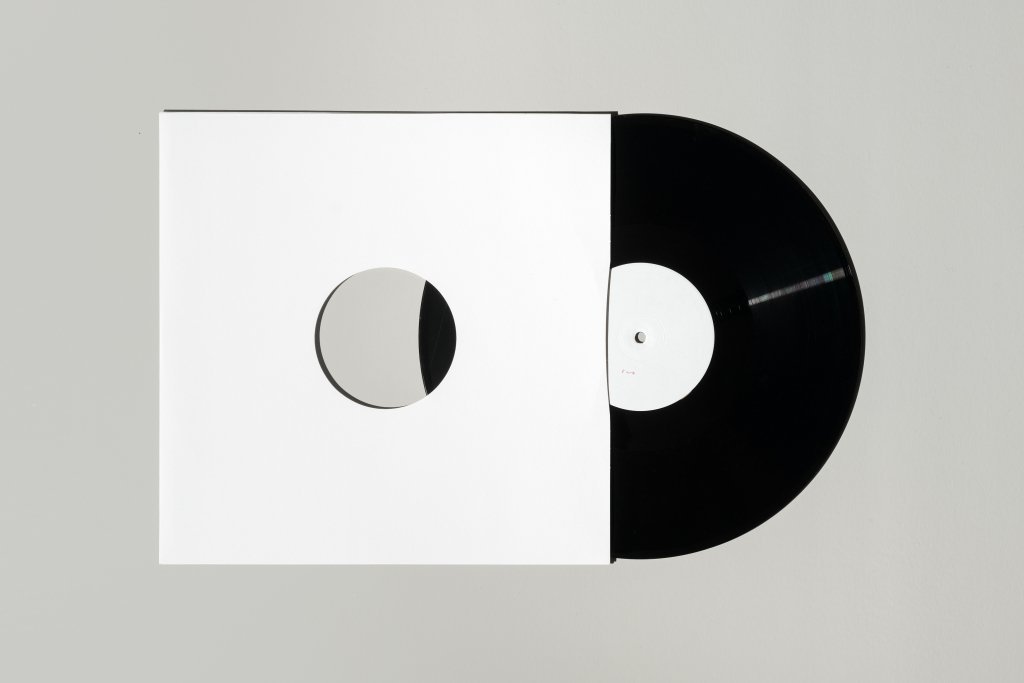
Also the voice – which especially for this occasion was recorded on a vinyl disc – seems to have a primitive nature. It is a deep, almost visceral warbling. Beyond the wall, in the private room, there is a second figure complementary to the first one. What is beautiful there? So the enigma of the dialogue is finally disclosed. The artistic value doesn’t lie in the visual beauty, but in the expressiveness. Expressiveness unifies art through time, space, matter and technique. Images speak clearly, and are faster than words. The joining link we developed to keep together Michael Dean and the fabulous Campi brothers is thus made of feelings, the same ones that artworks try to bring to light. We wouldn’t bet on the fact that Dean realised it. He was probably too busy being himself. However that intense gravity the 16th century scenes deliver perfectly matches the poetic language coming from Michael Dean’s act of assembling simple materials, we would even say “Franciscan” ones… Forms follow functions. The feelings that artists attempt to convey, though, do remain the same.
November 25, 2020
